As we transition from summer flows into the winter storm season our river options (here in the UK at least) widen. There have been a few posts on social media, both of boats and kit lost on high water runs, as well as questions from folk looking for alternatives to their usual runs, as they reach high flows.
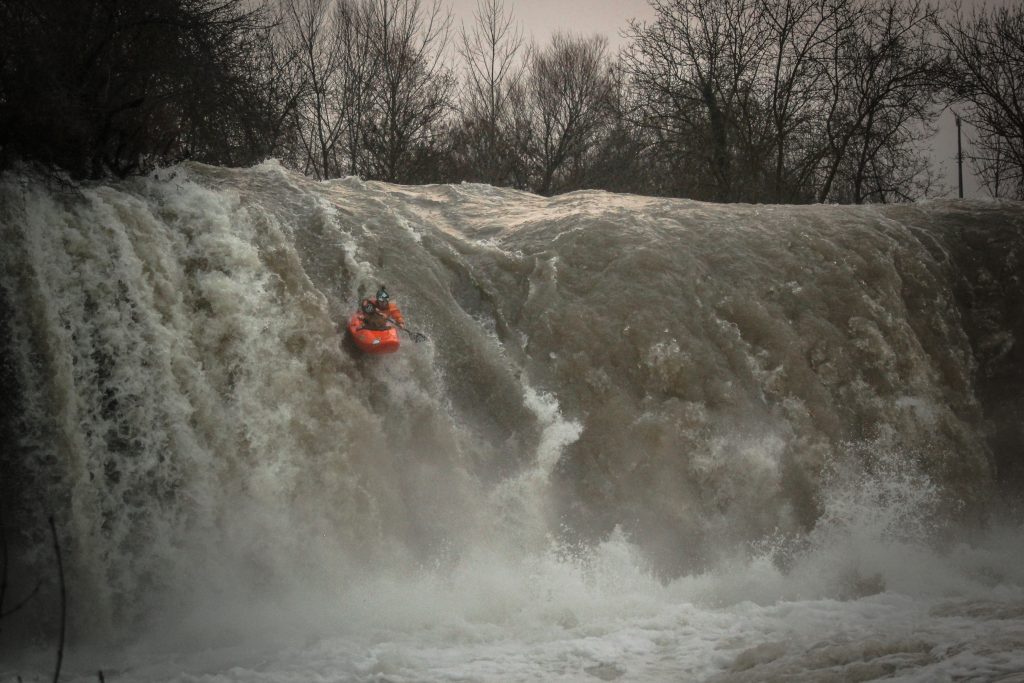
The level of skill to visualise and stick the line with high consequence is built up over many years of experience, and with a deep understanding of the river environment.
This is NOT a ‘do not go floodwater boating’ public safety announcement, rather some ideas for paddlers looking to have safe days out on the water, based extensively on my failings when I was younger. If you see me on the river feel free to ask about the time 8 of us got on a river, and after 500m there were 6 swimmers… we were still collecting boats from the estuary as darkness fell!
Some terminology first…
High – The river is above its normal paddledable level.
Bank full – The river has filled its normal channel, and there is no gap between the water and the bankside.
Flood – The river out of its banks and flowing through the trees on the edges of the river.
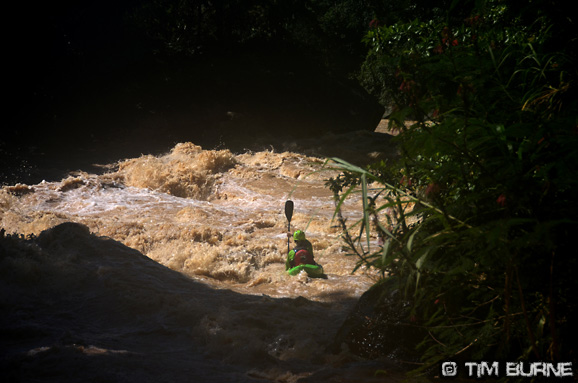
Tim and Chris had camped on the river during a multi-day expedition, and experience an overnight storm. The river rose 4ft overnight, and lead to some ‘type 2’ fun during their descent.
All of these levels provide excellent sport for us as kayakers, provided the team and environment that we choose to go into are in balance. Here’s some tips for ensuring this balance…
1. Check the forecast
Check the weather forecast (sounds obvious right!) and know what has happened the few days before in the local area.
If the river is already high when you go to get on, and there is more rain in the forecast, we can assume that the river will continue to rise. This is due to the headwaters (catchment) being already saturated, and so any rise can become exponential – water has nowhere to soak into, and so runs straight into the river.
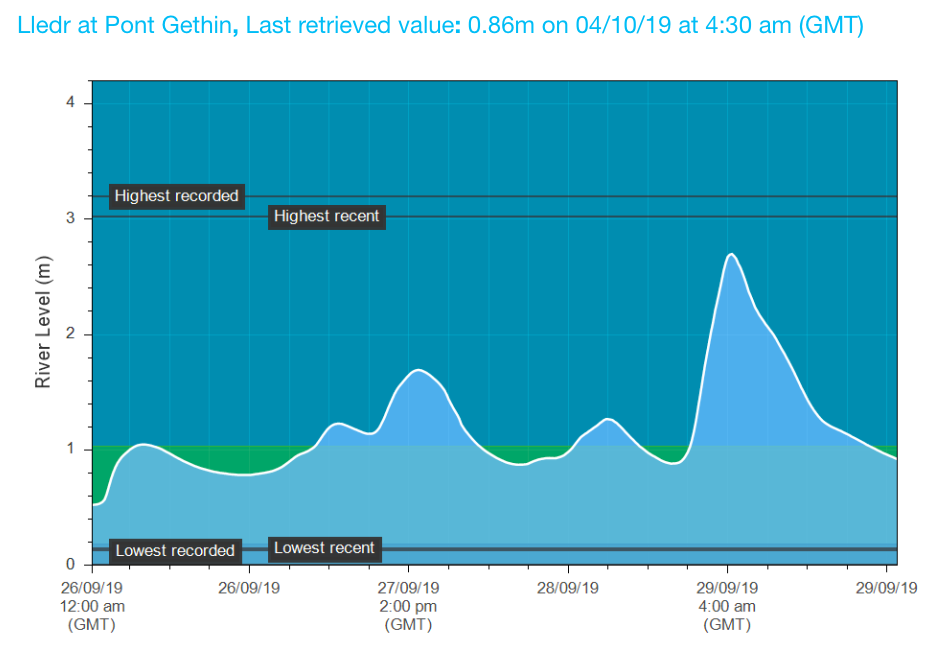
The rainfall of the days previous meant that the catchment was saturated, and so when the next band of rain came across there was an immediate and severe effect on the river flow.
2. Head up the valley
So, we’ve got to our planned river, and it is running high. We are not lemmings – we can make rational decisions! One option is to head further up the valley, lessening the impact of the rain on our drainages. A classic example of this is the River Findhorn in Scotland – the lower gorge goes most of the time, but the upper section of river only becomes paddleable in high water.
3. Turn the grade down
As the rivers are so much more forceful, and things happen much faster on high rivers, then lessening the grade we are paddling increases our margins for safety. I have had some of my favourite days paddling down big wave trains on grade 2 rivers, surfing waves that don’t normally form (and dodging trees as they float down!). A great example of this is the Dee, in North Wales. Last weekend it was huge, but the section below the normal ‘classic’ run would have been incredible fun.
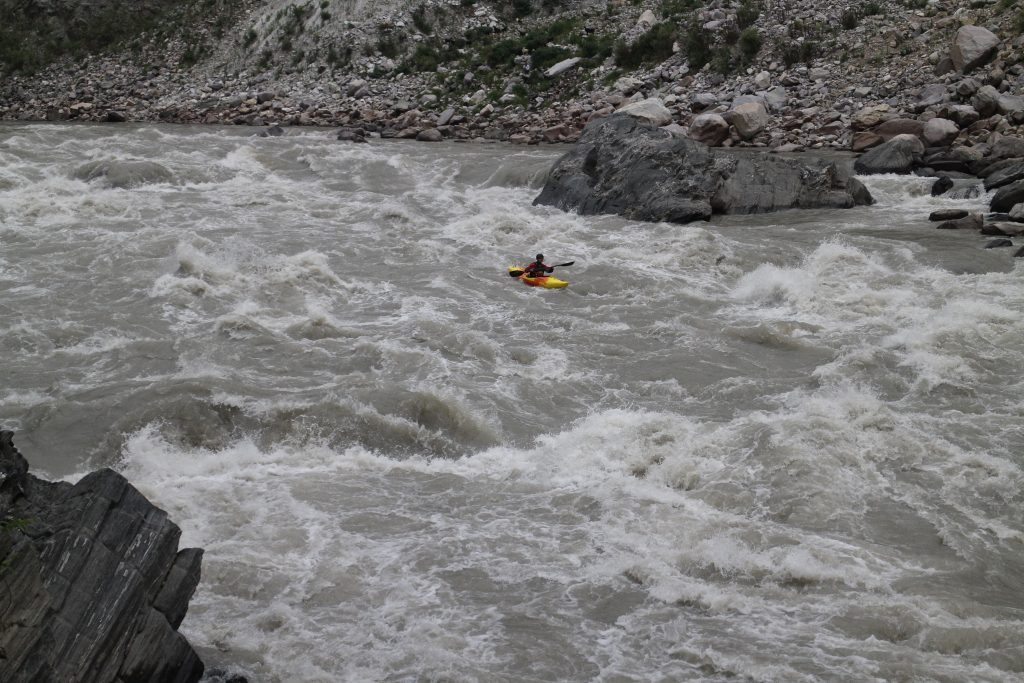
Knowing that they were faced with a very high water season in the Himalaya, the team were seeking out lesser paddled runs and making the most of their paddling days!
4. Change drainages
In the UK we are often blessed with being close to a multitude of runs, with rivers in one valley being off the scale, yet two valleys over there being a normal flow (or no water!) in the rivers. I’ve been on a very high Mawddach, and yet when we’ve passed the Eden confluence there has been little more than a trickle coming down!
5. Drink coffee
Our gut instinct is a very powerful thing. If we’ve spent a couple of hours trying everything above, and still haven’t found anything we feel like we want to paddle then go and drink coffee or mess about in the park. It rains a lot in the UK, so the rivers will be up again soon…
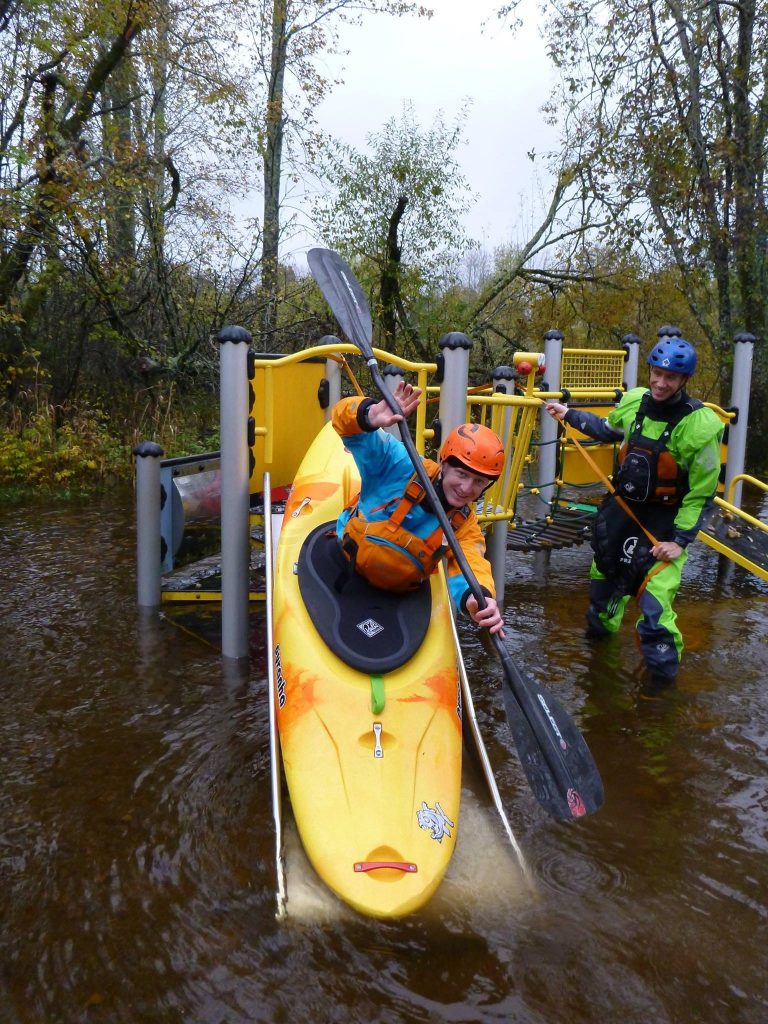
It had been raining continuously for 10 days in the Highlands of Scotland and everything was in flood. In search of more appropriate activites we ended up mucking about in the park at the get on of the Teith, before a very high water run down a classic grade 2!
If you want to read more about the background to these ideas of good decision making then my good friend Tom Parker has written this about Heuristics for paddlers here: Link to Heuristics for paddlers article



